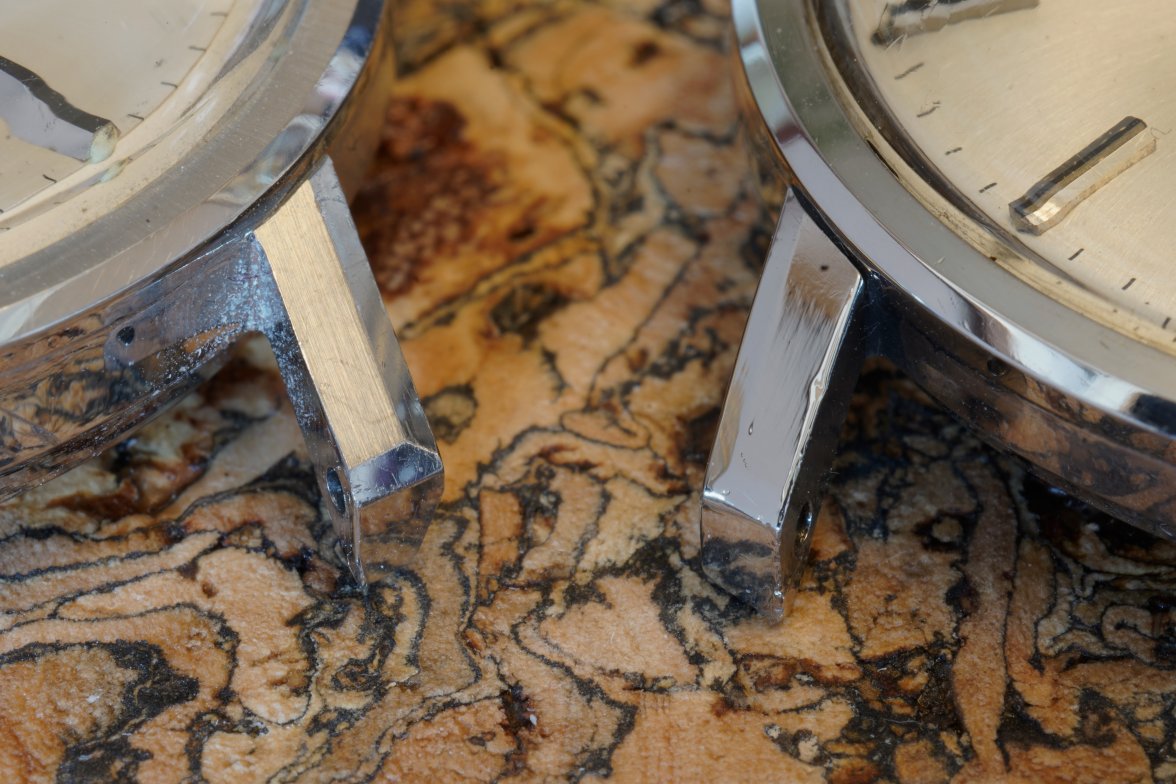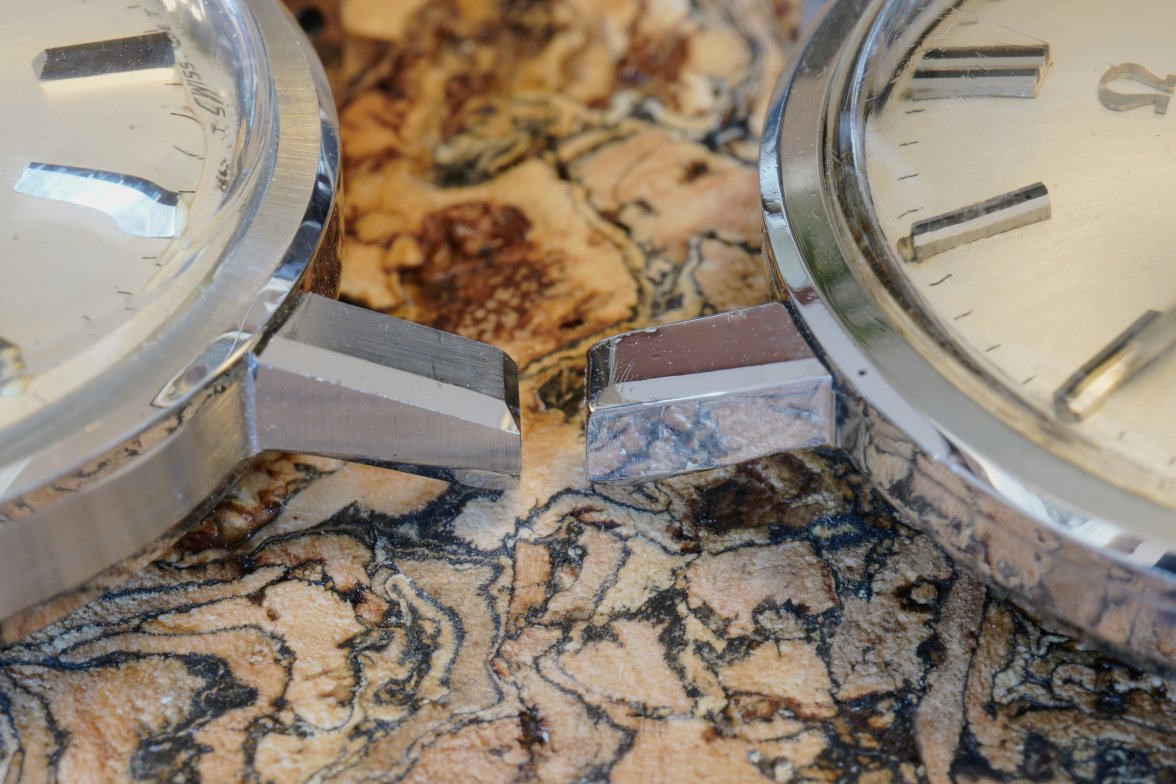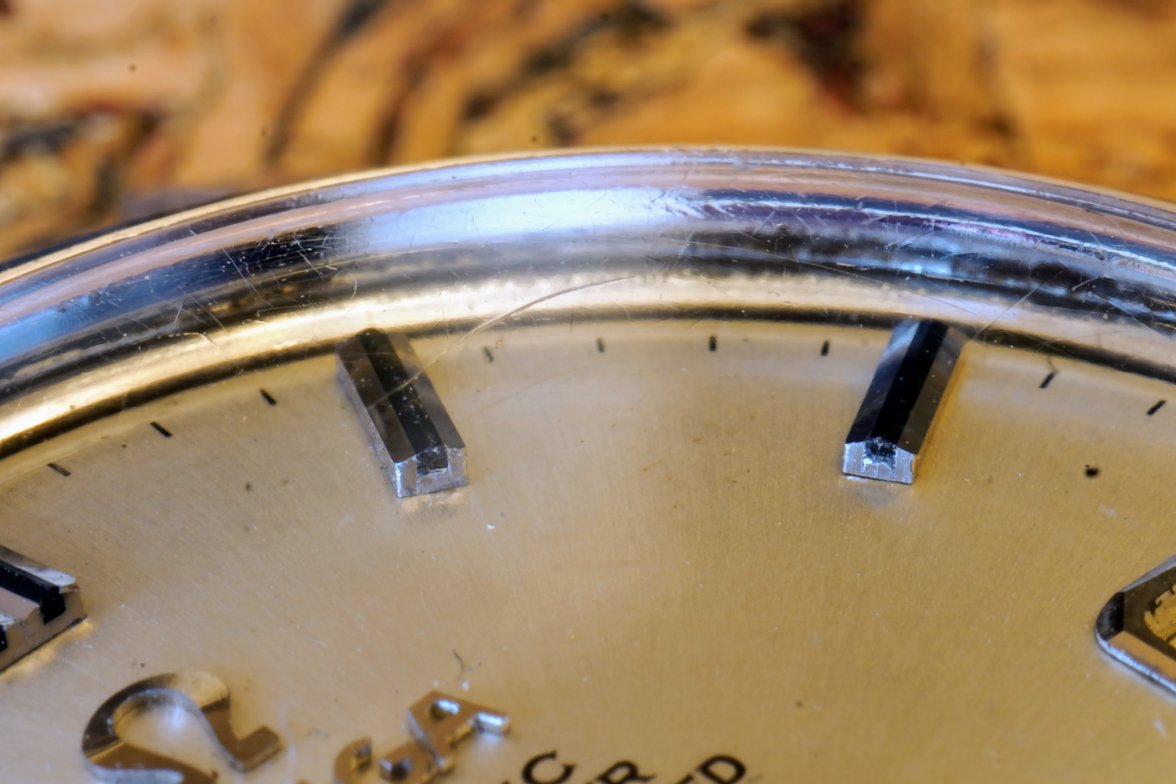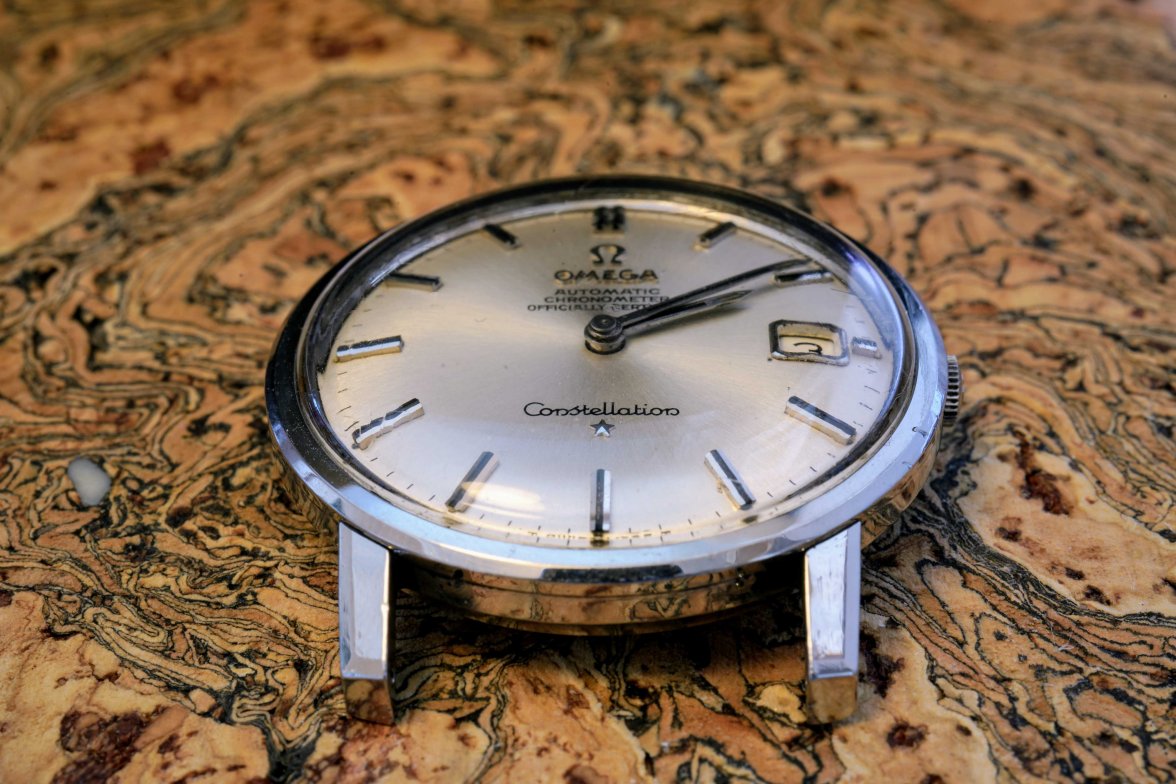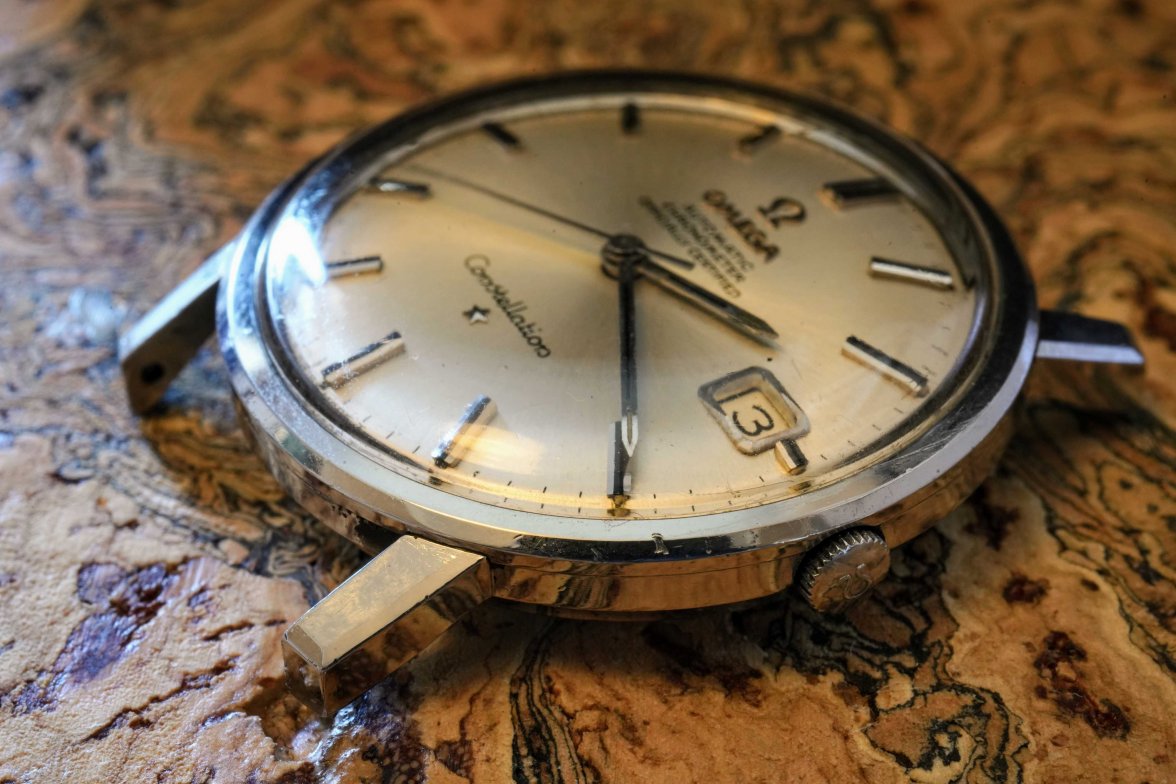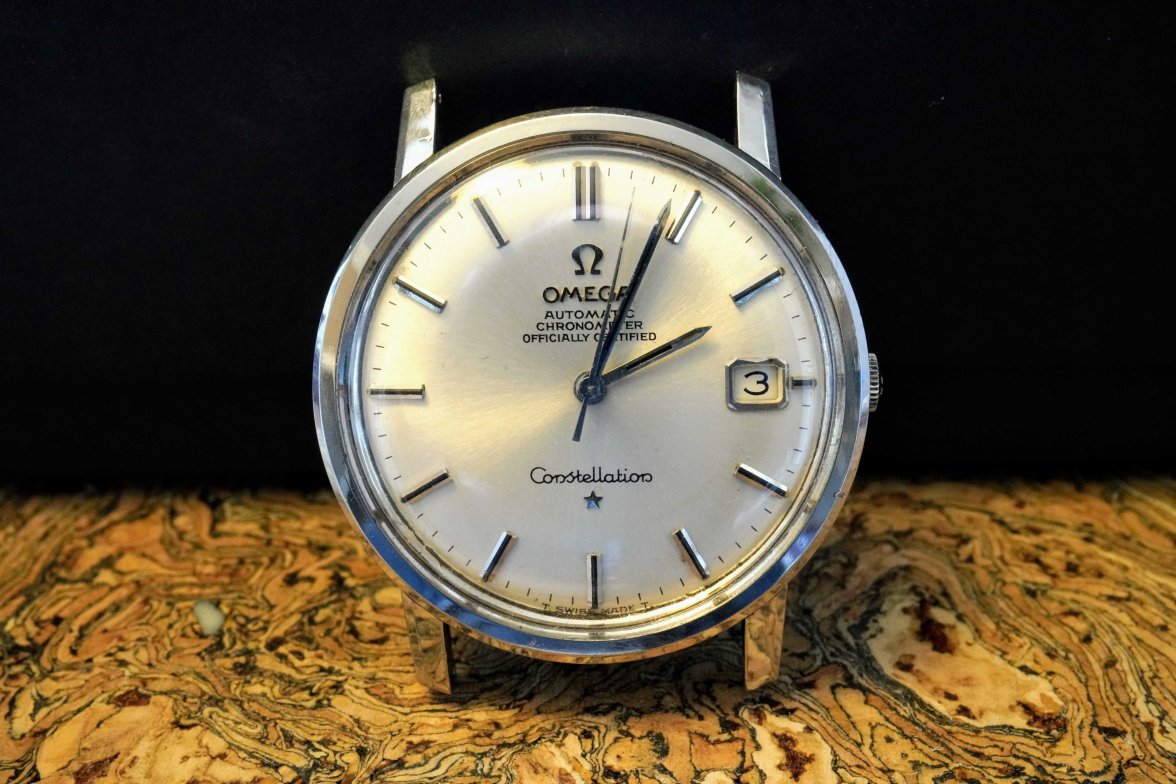Neeb
·I have a 168.010 and a 168.016, both late 1960s "round case" models. The 168.016 is in very good condition as regards the case itself, with very sharp angled lugs that are brushed on their upper and side surfaces and polished on the narrower facets. The 168.010 is not quite as sharp, and I suspect may have had some sort of light case polish at some point in its history.
But I'm not sure how "sharp" the 168.010 would have been to begin with, and whether it would ever have had brushed surfaces like the 168.016, or if they were polished on all surfaces out of the factory. I haven't seen any pictures of 168.010s with brushed lug surfaces. Did the earlier round case models (168.004 and 168.010) always have polished lugs (and bezels for that matter), with brushed surfaces only being introduced with the later 168.016 and 168.018 models?
I do think of these later models as having more of an "early 1970s" style to them (with flatter dials, wider hands etc), and I get the impression from my experience with Seiko that brushed surfaces were a late 1960s / 1970s trend in watch design generally.
Pictures of mine - with 168.016 on the left, 168.010 on the right:
But I'm not sure how "sharp" the 168.010 would have been to begin with, and whether it would ever have had brushed surfaces like the 168.016, or if they were polished on all surfaces out of the factory. I haven't seen any pictures of 168.010s with brushed lug surfaces. Did the earlier round case models (168.004 and 168.010) always have polished lugs (and bezels for that matter), with brushed surfaces only being introduced with the later 168.016 and 168.018 models?
I do think of these later models as having more of an "early 1970s" style to them (with flatter dials, wider hands etc), and I get the impression from my experience with Seiko that brushed surfaces were a late 1960s / 1970s trend in watch design generally.
Pictures of mine - with 168.016 on the left, 168.010 on the right:
